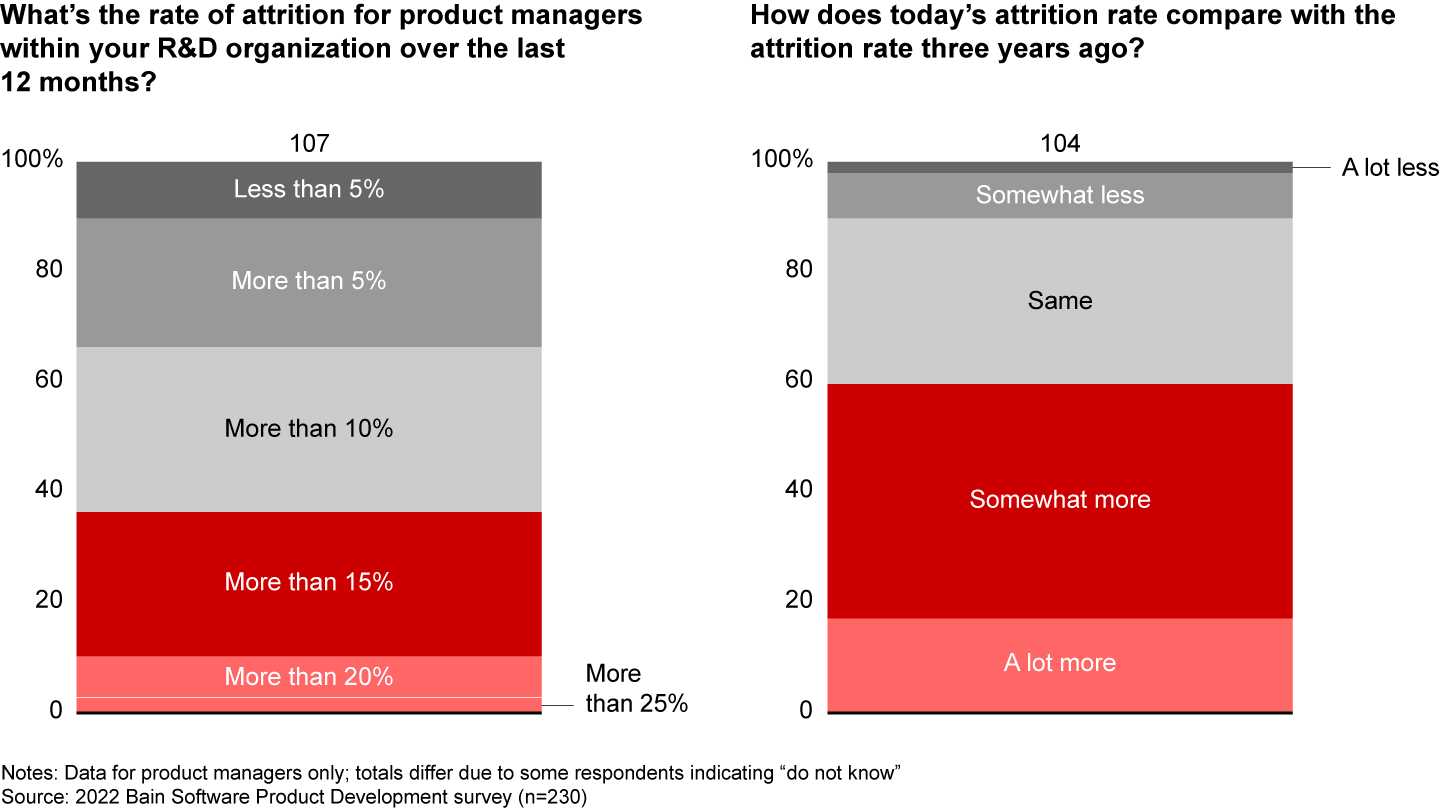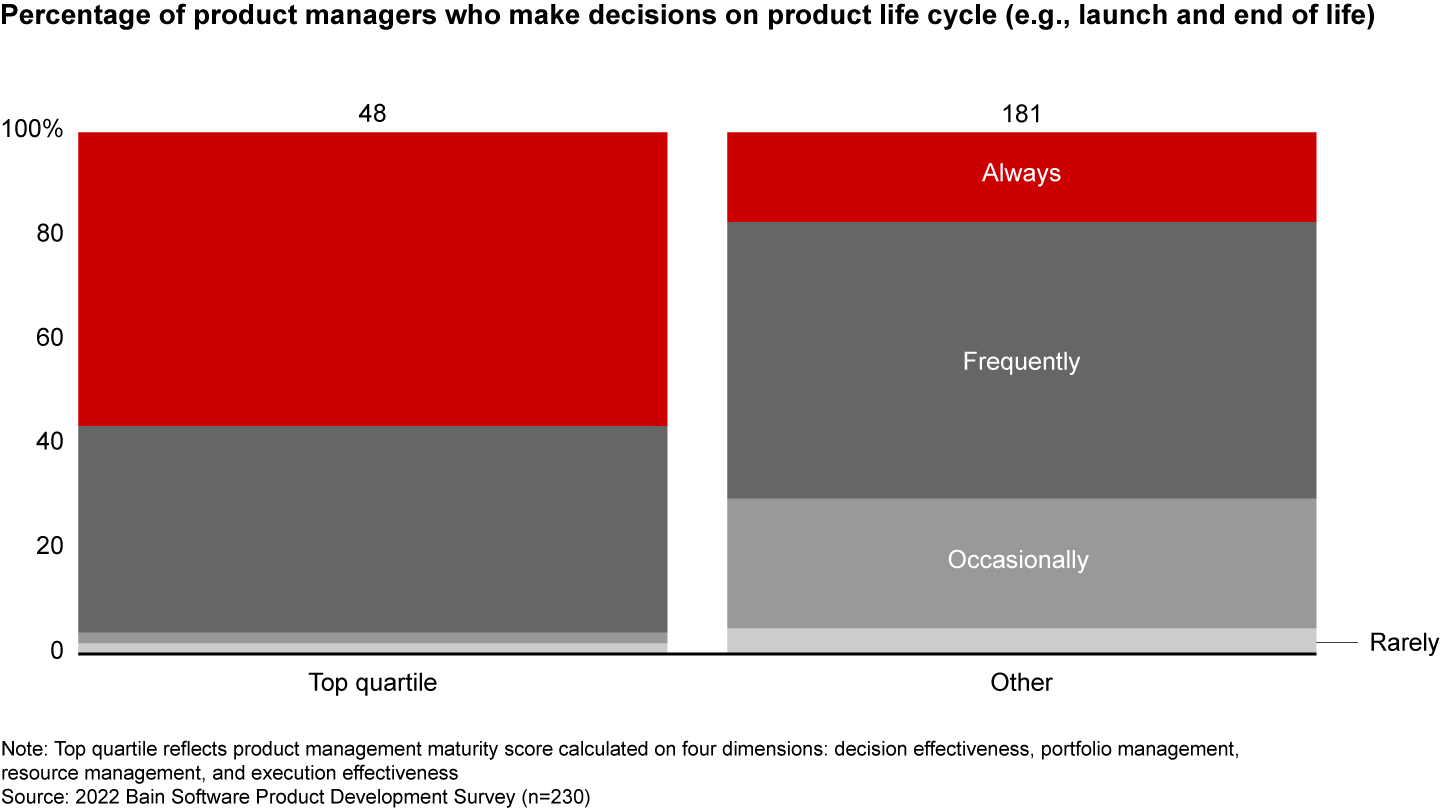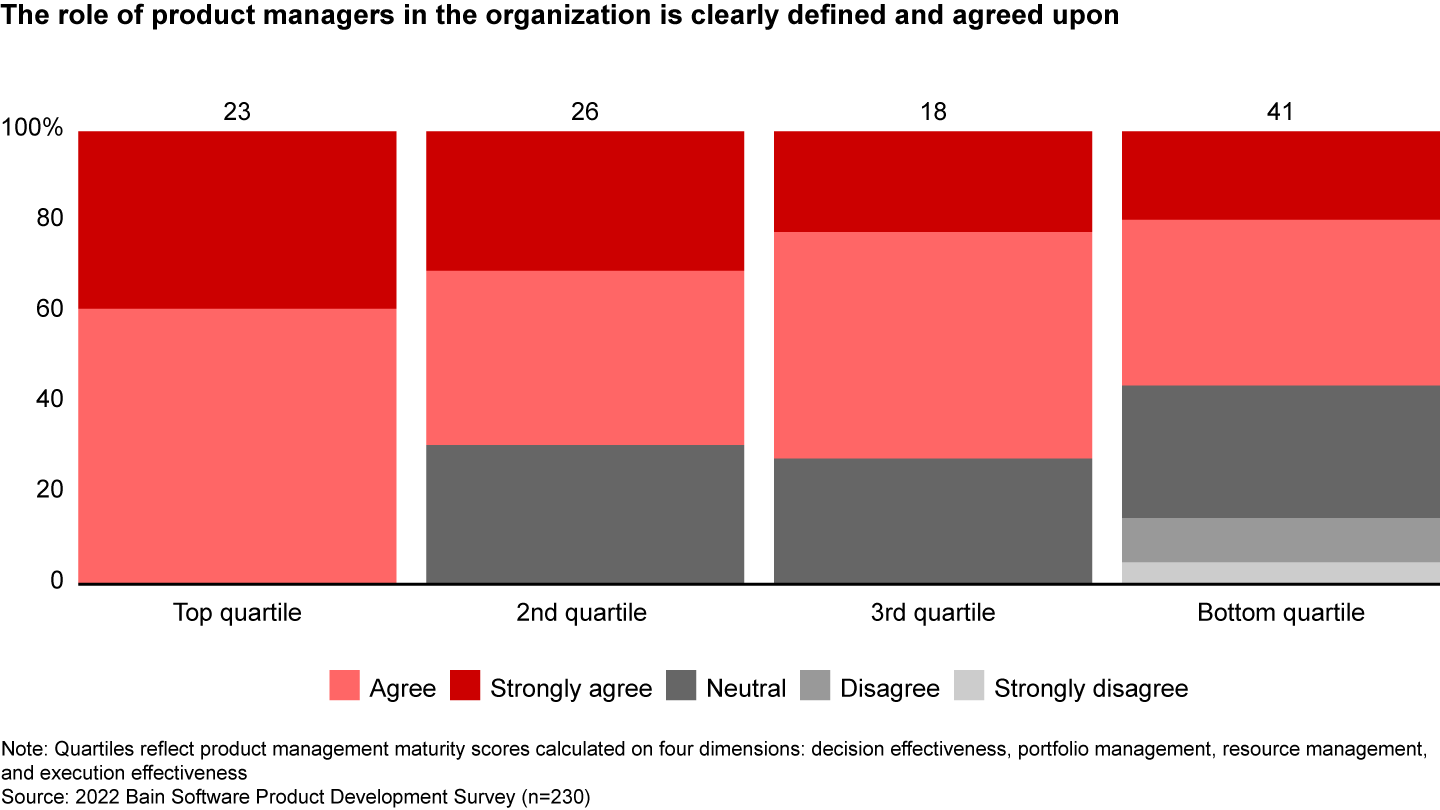Technology Report
 }
}
Executive Summary
- Only 25% of chief technology officers say the return on their company’s software development investments meets expectations, Bain research shows.
- Companies that excel in product management are over 40% more likely to beat the Rule of 40 performance metric.
- Leading companies build successful product management teams by empowering and properly funding them, focusing them on delivering value to customers, and better managing the product portfolio.
This article is part of Bain's 2022 Technology Report.
As companies across industries struggle to generate meaningful returns on their software research and development (R&D) investments, many overlook a solution that’s right at their fingertips: effective product management.
Only 25% of chief technology officers feel the return on their software development investments meets the expectations of senior management and the board, according to a 2022 Bain & Company survey. Executives know what derails these investments. It’s usually some combination of an underdeveloped product roadmap that doesn’t truly embody the company’s strategy, poorly prioritized product features, poor software development execution, released products that don’t address customer problems, and opaque engineering activities that make it difficult to focus on the right priorities or even understand what those priorities are.
While some of those challenges are squarely in the domain of the CTO or engineering leadership, effective product management can play an outsized role in resolving them. Bain evaluated more than 60 factors and found that strong product management is perhaps the single most important ingredient in achieving software development goals. And it leads to better performance in the market. Our analysis found that companies that excel in product management are over 40% more likely to beat the Rule of 40, the principle that a software company is balancing growth and profitability well when its combined revenue growth rate and profit margin exceeds 40%, regardless of company size, growth stage, or market (see sidebar “About the Rule of 40”). That’s important because software companies that outperform the Rule of 40 have valuation multiples (measured by the ratio of enterprise value to revenue) an average of 50% to 60% higher than companies that underperform the rule, according to Bain research.
Most executives understand product management plays an integral role in software development. After all, product managers essentially own the product. They’re responsible for building product roadmaps, coordinating development, and prioritizing which features to add. They also bring a valuable cross-functional perspective to development activities.
However, when we evaluated seven capabilities critical to a world-class product management organization (see sidebar “How We Measure Product Management Maturity”), we found very few companies do all of them well. More than 40% of companies in our survey self-reported significant gaps in two or more of the critical capabilities in our Product Management Maturity Index, saying they rarely or only occasionally demonstrate those capabilities.
In a company’s early days, product management often has a leadership role, or at least a strong partnership. As the number of products increases and product management becomes one of many functions in a highly complex organization, the capability often atrophies. Too often, just when product managers are most needed to deal with complexity and simplify the product line, their role is reduced to program management, with important decisions led by engineering, finance, and sales. That can leave product managers frustrated, disenchanted, and more likely to leave.
Indeed, attracting and retaining top product management talent has grown more difficult. In this year’s survey, about 40% of product management executives reported attrition rates of more than 15% during the prior 12 months, and 60% said attrition is worse now than it was three years ago (see Figure 1).

How to reinvigorate product management
For most companies, any software R&D turnaround starts with putting product management back in the front seat. In our work with companies around the globe, we’ve found three steps critical to developing world-class product management.
Empower the product management team. Product management holds significant authority and leadership responsibilities at the most successful software companies, either as general managers or through an influential chief product officer. Giving product management teams responsibility for products from launch to retirement tends to increase their effectiveness (see Figure 2). At leading companies, product managers direct product strategy decisions, and have significant cross-functional influence. And they have clearly defined expectations that everyone in the company understands (see Figure 3).


Leading companies also dedicate sufficient resources to this function. Every company is different, of course; the need for product managers will vary based on the maturity of the product and the product manager’s skills. But overall, too many companies expect great results without explicitly assigning product managers to all areas of software development or ensuring each area has the right level of support. Our research shows that the sweet spot for the best-performing product management organizations is one product manager for every 11 to 15 software engineers. Results decline when product management has fewer resources.
Strengthen the portfolio management capability. Clarifying the process for managing the product portfolio is a powerful way to align teams. It also tends to improve investment decisions.
In this context, portfolio management refers to key processes that nearly all companies have but often don’t actively manage or explicitly document. Best practices start with linking the product strategy to execution using a common language to describe distinct investments by product line and market. Next, companies institute a regular cadence to review and reset product investments. Finally, they make explicit who owns product decisions, and have well-defined methods for prioritizing within the portfolio. By creating a common framework and putting product managers in position to own and direct sections of the portfolio, companies avoid the common pitfall of failing to truly reevaluate the portfolio and instead repeatedly renew past decisions.
One software company freed up significant funds to invest in new growth areas simply by improving its portfolio management. The company redefined its product taxonomy, mapped its current investments so all teams were working from the same set of facts, and then clearly articulated its objectives for each part of the business. As a result, the company reallocated about 20% of its product budget to new sources of potential value creation, including one product that could power the company’s growth in the future, all without disrupting existing businesses.
Focus on systematically delivering value to customers. At leading companies, this means regularly assessing product investment priorities based on hard data about customer usage, adoption, and engagement. Product managers have the autonomy to invest in areas that don’t always pan out, with the understanding that investments will be adjusted as new data arrives.
These companies recognize that data alone doesn’t tell the full story, so they also engage directly with customers. All product objectives aim to solve customer problems, and product managers often spend time with customers. Some even build customer meetings into their onboarding of a new product manager.
Top of the agenda
Product management is no longer primarily the purview of the head of product; at leading companies, it’s top of mind for the entire C-suite and board of directors. They realize it can play a powerful role in directing engineering effort, maximizing precious R&D resources, eliminating low-value investments, and, ultimately, achieving and sustaining financial growth that outperforms the competition.


